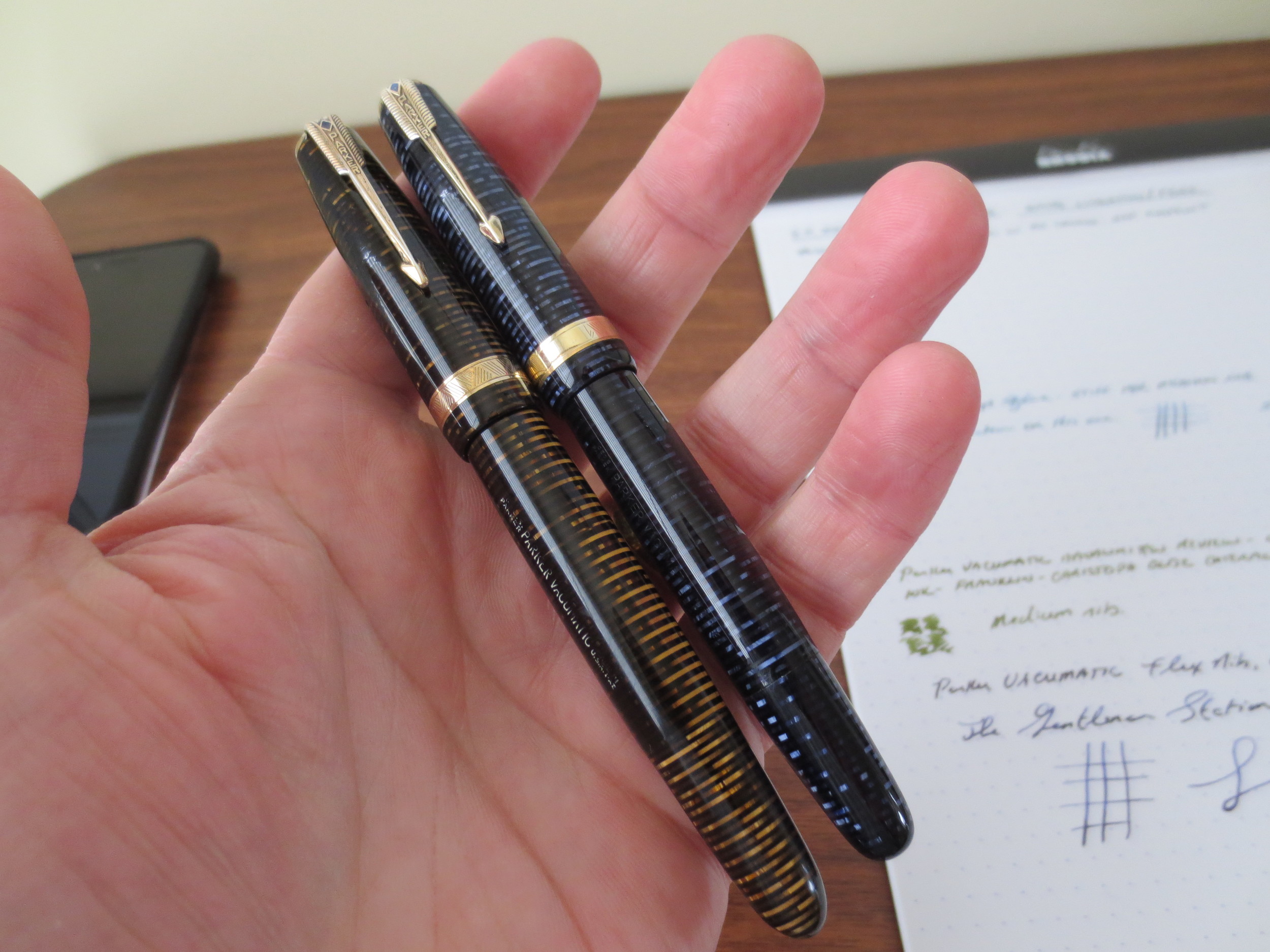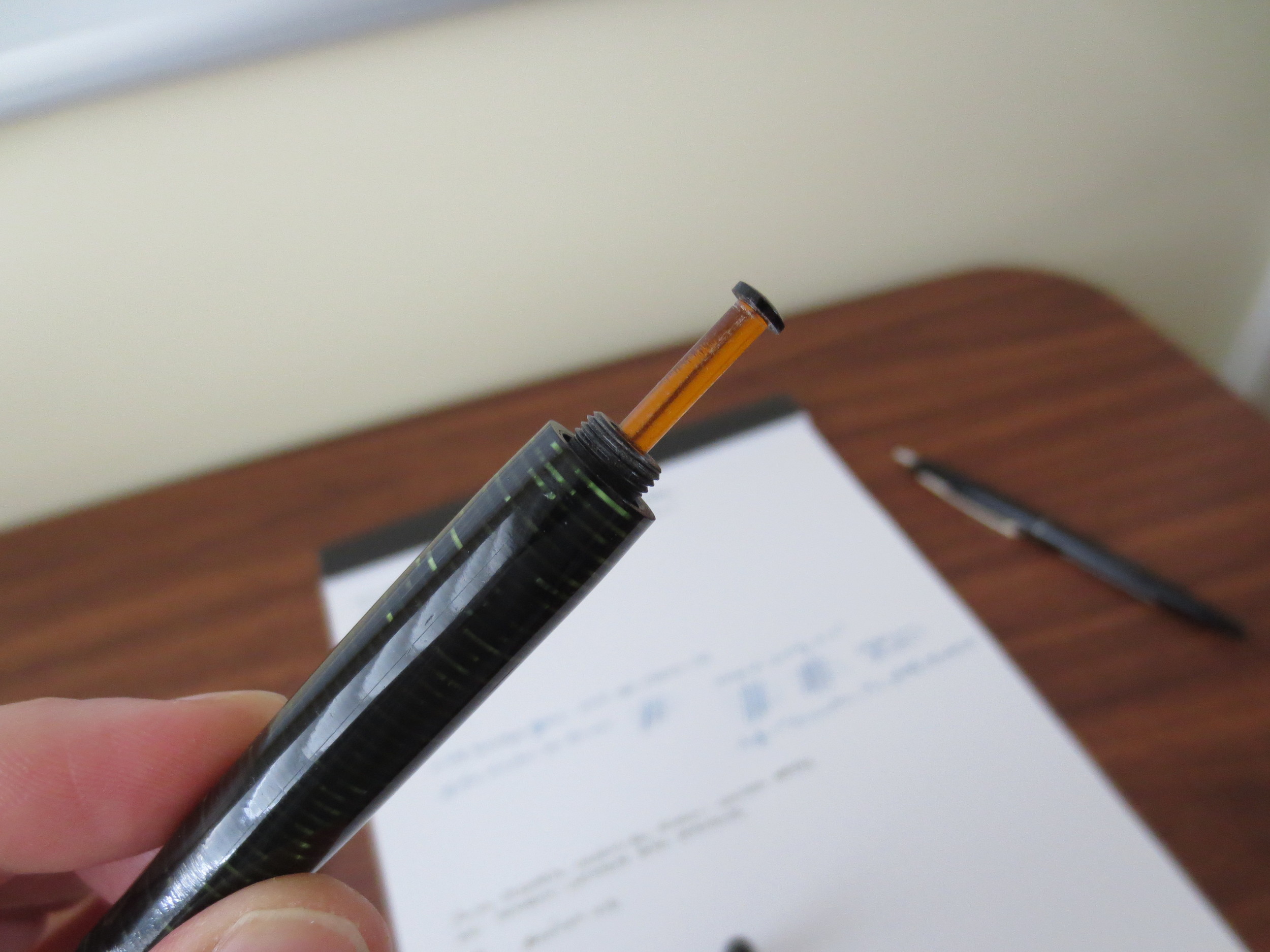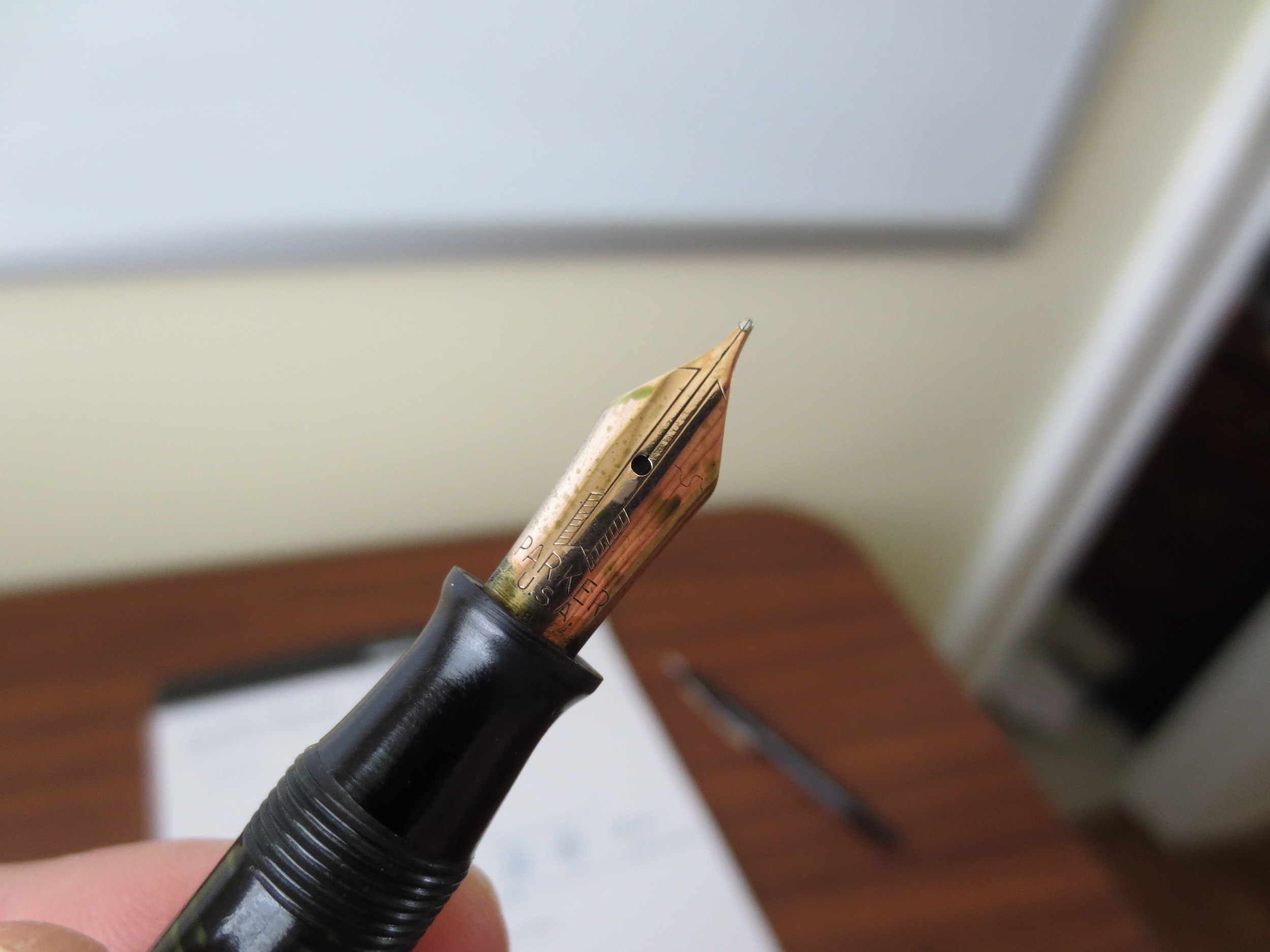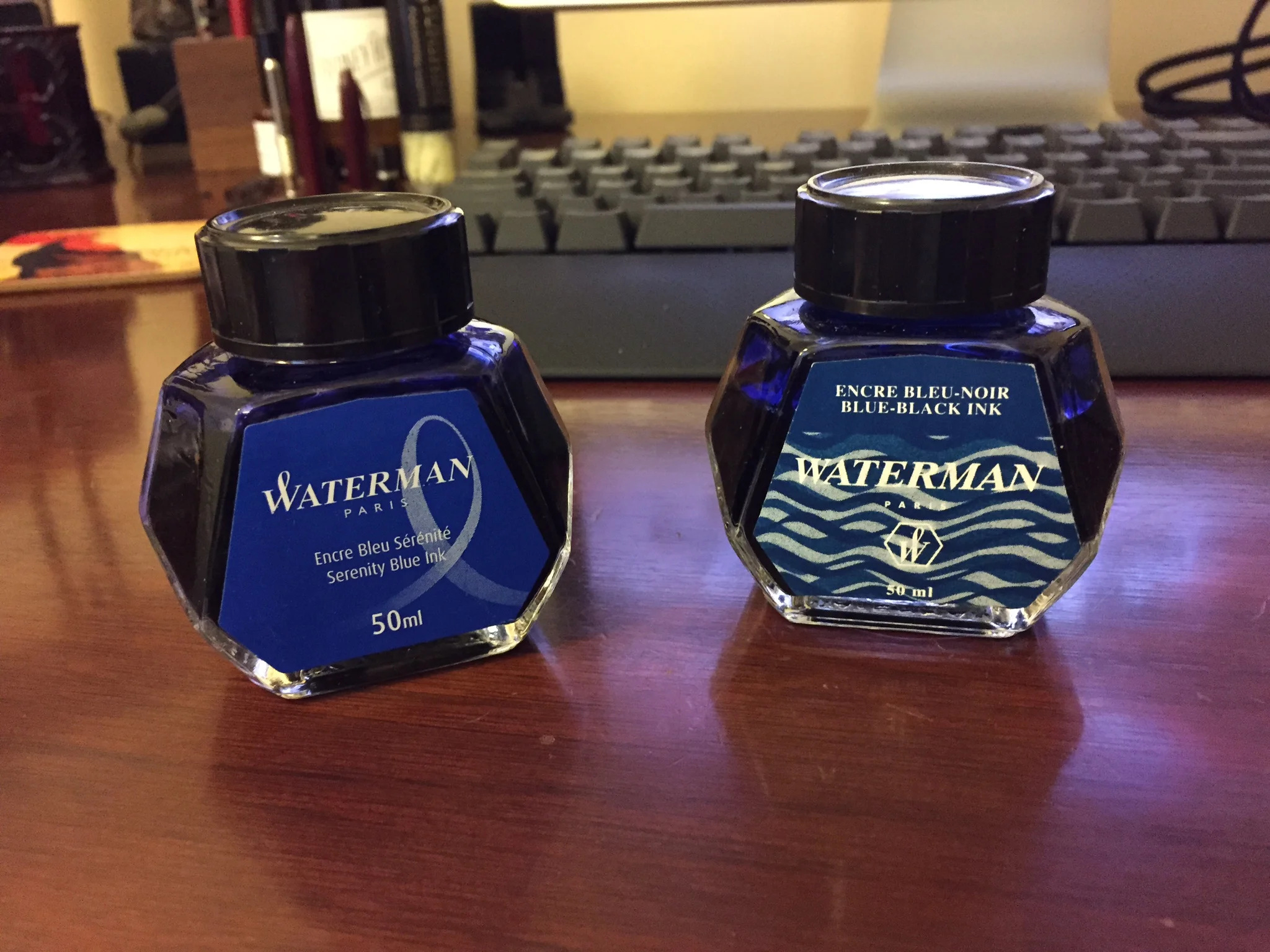So I sat down this morning, preparing for my day, and realized that due to some reviews in progress and new ink purchases, I have WAY too many pens inked, and plan on inking three more soon. (What, I'm supposed to let three brand new bottles of ink just sit there unused until I actual drain a pen?!) I might as well give you all a post out of it, even though I personally consider having this many inked-up fountain pens to be insane. What can I say, I'm working my way through them. They are:
- Parker Vacumatic Major (3rd Generation), Green Celluloid with Medium Nib, inked with Franklin-Christoph Olde Emerald.
- Waterman Man 100 Patrician, Coral Red with Fine Nib, inked with Bung Box Sapphire.
- Sailor 1911 Large, Black with Silver Trim, Nagahara-modified Music Nib, inked with Sailor Jentle Apricot.
- Waterman Hemisphere, Black with Gold Trim, Fine Nib, inked with Sailor Jentle Oku-Yama.
- Karas Kustoms Ink, Black with Copper Grip, Medium Nib, inked with Sailor Jentle Grenade.
- Kaweco AC-Sport in Red, Medium Nib, inked with Kaweco Blue cartridge.
- Montblanc 146 with .6mm Binder Stub, inked with my mixture of Sheaffer Skrip Red and Aurora Black.
- Pilot Vanishing Point in Matte Black with Masuyama Broad Stub, inked with Bung Box Blue Black.
- Pilot Metropolitan, Plain Black with a medium nib, inked with my Skrip/Aurora Red-Black mix.
- Sailor Pro Gear Imperial Black Edition, Fine Nib, Inked with Iroshizuku Yu-Yake.
I have bottles of Montblanc Corn Poppy Red, JFK Blue Black, and Edelstein Garnet on the way, so I really, really need to write some of these pens dry. I have several InCoWriMo responses in progress, so that will help, but seriously people, I feel like I have issues.










